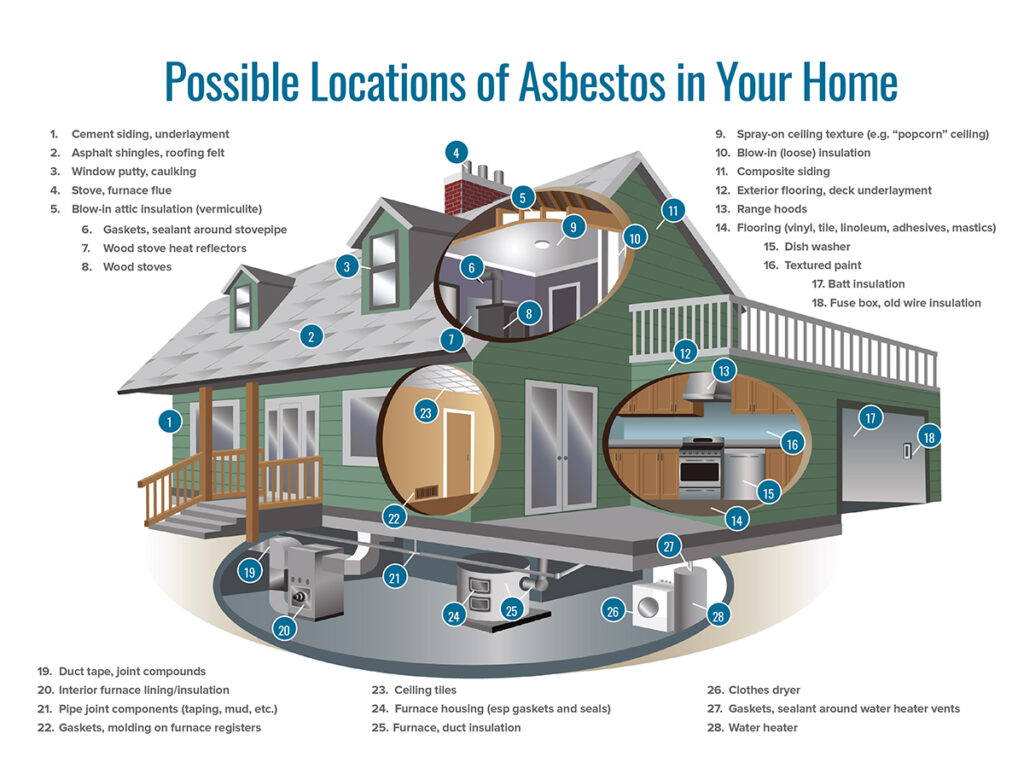Asbestos is a hazardous air pollutant
Asbestos is classified as a hazardous air pollutant by the U.S. Environmental Protection Agency and is the reason why demolition and renovation projects must comply with certain asbestos requirements.
When asbestos fibers are inhaled, they can become lodged in the lungs and remain there throughout life. Fibers can accumulate and cause scarring and inflammation and lead to serious conditions including lung cancer and mesothelioma.
Here is a link to disposal guidelines at Graham Road Landfill.


Asbestos – What is it? Should I be concerned?
In the United States, 12,000 to 15,000 people die every year from asbestos related diseases. The latency period from exposure to asbestos fibers to disease onset is anywhere from ten to forty years. Asbestos is still present in homes and buildings, therefore it is important to your health to understand what asbestos is and where it is commonly found, and how it can become airborne.

